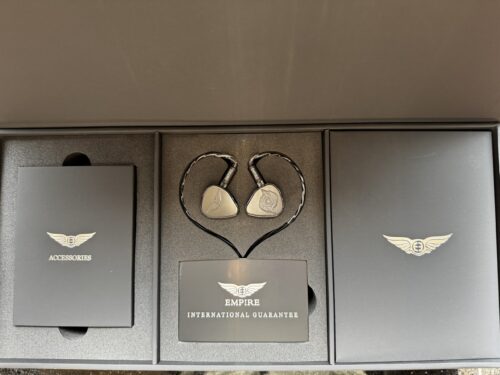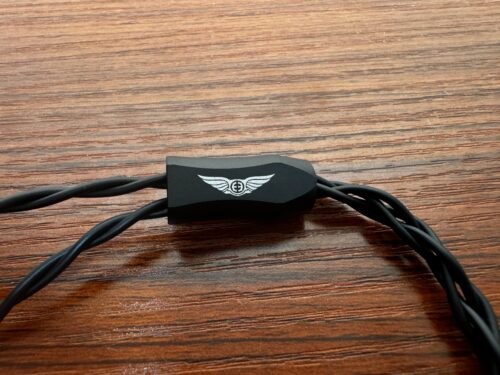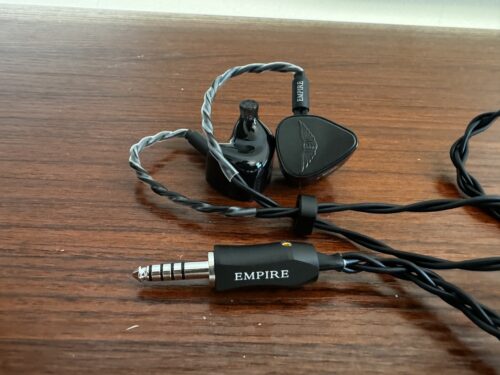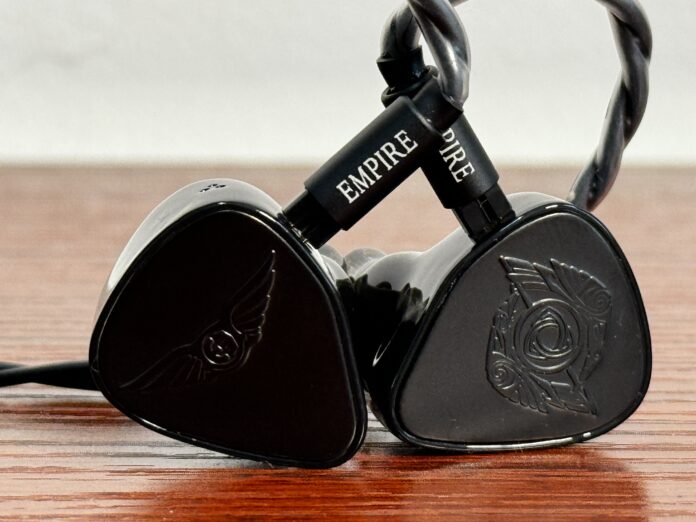Every once in a while something truly special comes across my desk. Today, that comes in the form of the Empire Ears Raven. With an impressive design, unique sound signature, and premium asking price, there is much to consider with this IEM. So, let’s dig in.
What’s in the Box:
- Empire Ears Raven IEMs
- R7 Cable
- Final Audio Type E Eartips
- Cleaning Brush
- Carrying Case
- Cable clip
- Microfiber Cloth
- Warranty card
- User guide

Fit & Finish:
The Raven is a large and well-built IEM. When looking at the sum of its parts, including the Raven earbuds, the R7 cable, and even the inclusion of Final Audio’s beloved Type-E ear tips, it’s clear Empire Ears has gone out of their way to create durable and beautiful IEMs. The earbuds themselves are rather large but fit deeply in the ear. They are noticeable when worn for long listening periods, but are a lot more comfortable than I expected giving the size and fit.
The R7 cable and Final Audio tips are just the icing on the cake in terms of premium accouterments. The cable is not prone to tangling and has no microphonics. It’s tough but flexible and should be durable for the long haul. The Raven comes with a range of ear tip sizes and the inclusion of Type-E ear tips is a wonderful touch.
Design:
The Raven uses what Empire Ears calls a “quadbrid” design, or a system made up of four types of drivers. First, there’s that W10 bone conductor driver, which Empire ears says is at the forefront of their innovation on this design. Then there are the dual W9+ subwoofer drivers. Add in five BA drivers for the midrange and four electrostatic tweeters and together you get a whopping 12 total drivers in each ear. These are all connected by what Empire Ears refers to as synX crossover network. There’s also a system called EIVEC MKII, which aims to make sure the timing and phasing control between the electrostatic and bone conductor drivers stay correct.
On top of that, the Raven uses its stainless steel faceplate to assist with the bone conduction properties of the IEM. Plus there’s a feature called the Harmonic Resonance Core, which is a “polymer acoustic stage… situated strategically between the shell and the plate.” So it goes without saying that this is a very technologically advanced IEM.

Soundstage:
The soundstage and imaging capabilities of this IEM are simply outstanding. While the Raven fits relatively deep in the ear, music never sounds like it’s coming from inside your head. There’s both a great sense of lateral space as well as top to bottom coverage that is wholly immersive. But what’s most impressive to me is the imaging. Tiny little details are speckled all the way throughout the soundstage. There were times where I was looking around to see where sounds were coming from, even though they were simply coming from the IEM.
Low end:
The low end of the Raven is really fascinating. It’s thick and dynamic with a tinge of warmth. What I found interesting about the bass response is that it’s able to be heavy and visceral without bleeding into the midrange at all. I presume this comes from the Raven’s unique driver configuration. The bone conduction capabilities of the W10 driver, paired with the dual W9+ subwoofer drivers allows for a deep bass resonance that feels very well separated from the Knowles and Sonion BA drivers.
All this said, if you want a unique, punchy, and deep bass response, these are a great bet. The physicality of the bass response is like nothing else I’ve tried, save a few even higher end models, including the Novus, which Empire Ears collaborated on with Astell & Kern, and also combines the W9+ subwoofer drivers with a bone conduction system.
Midrange:
After talking about the bass, the midrange could almost pale in comparison. Except this is where the real nuances of the IEM come into play. The five BA drivers that the Raven employs do a fantastic job retrieving midrange detail. I could hear how electric guitars were coming out of their amps, and singers sounded like they were in the room with me.
On Adrianne Lenker’s new album, I could really hear a visceral quality to the midrange. I noticed the great microdynamics particularly on her song “Vampire Empire,” a lofi take on the song she wrote for her band Big Thief. It can be hard for IEMs and headphones to reproduce lofi music faithfully, but the Raven gave me a visceral sense of the distortion on Lenker’s microphone and aggressive guitar strumming.
High end:
The top end of the Raven is a little subdued compared to the bass and mids. Using quad electrostatic tweeters from Sonion, the treble is sparkly with tons of headroom. For a warm leaning IEM, the treble is about where you’d want it to be, though I found it to be a little polite. On songs like Steely Dan’s “Deacon Blues,” hi-hats came across as smooth and detailed without being glaring or sibilant. This delicate treble paired with the bass and midrange responses on the Raven make for a warm and engaging listen.

Summary:
The Empire Ears Raven aims to be a top of the line boundary pusher. Using 12 drivers to create a unique and enjoyable sound experience, Empire Ears has found a winner. If you’re a bass lover in particular, I think you’ll love this IEM. However, its unique quirks are something to consider. If you’re not into bone conduction or the 2 ohm impedance is difficult for your source to handle, then you might want to be careful with these. But if you want a premium experience with a lush, fun sound signature and incredible imaging capabilities, then look no further.
The Empire Ears Raven is available at Audio46.
Compare the ranking of various headphones, earbuds and in-ear monitors using our tools.
Discuss this, and much more, over on our forum.
---MAJORHIFI may receive commissions from retail offers.














